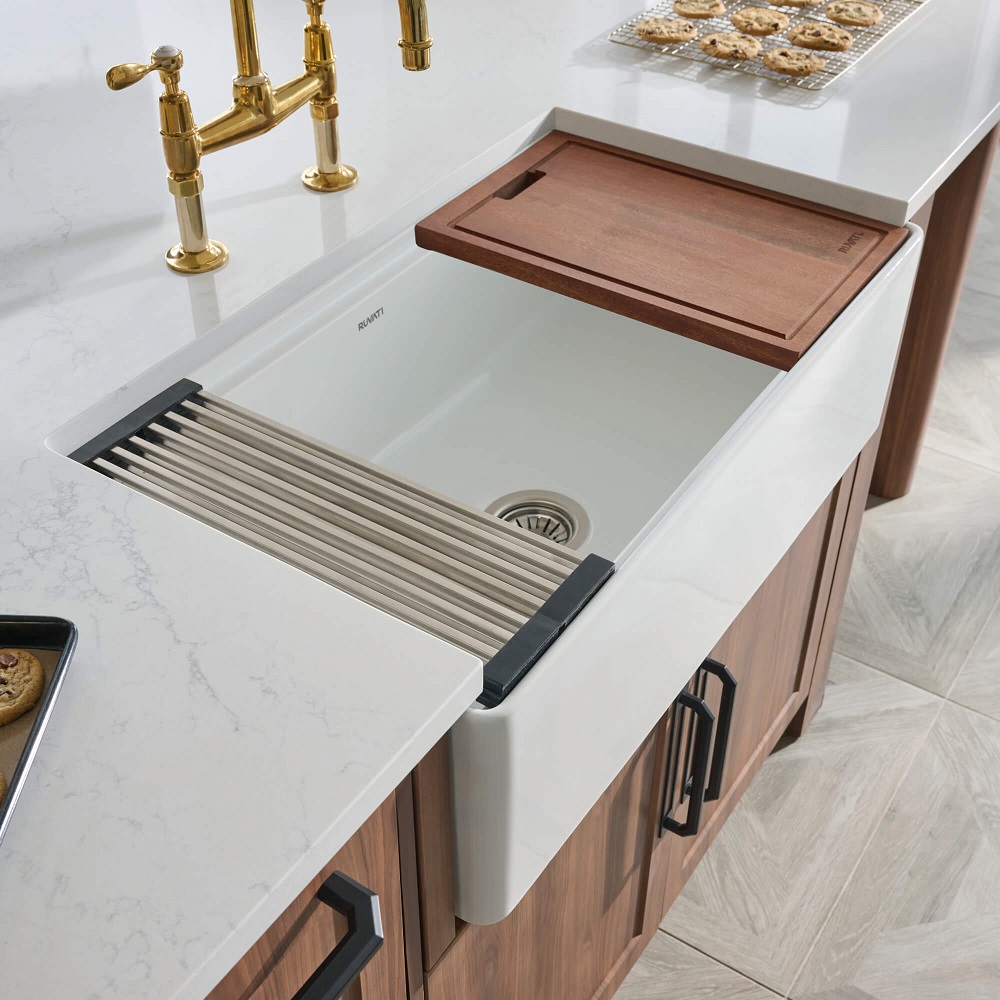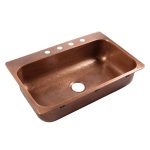The apron kitchen sink, also known as a farmhouse sink, has become a popular choice for homeowners who value both aesthetics and functionality in their kitchen design. With its deep basin and exposed front panel, this style of sink evokes a rustic, traditional charm, while also offering practical benefits for daily use. However, like any major design choice, apron kitchen sinks come with their own set of advantages and disadvantages. In this article, we will explore the pros and cons of this kitchen sink style to help you make an informed decision if you’re considering incorporating an apron sink into your kitchen design.
What Is an Apron Kitchen Sink?
Understanding the Design
An apron kitchen sink characterize by its exposed front panel, which extends beyond the countertop or cabinetry. This design often associat with farmhouse-style kitchens, although it can also complement more modern or transitional kitchen designs. Unlike traditional sinks, which are mounted inside the countertop, the apron sink is typically installed as an under-mount or farmhouse-style installation, where the front of the sink is visible and protrudes beyond the cabinetry.
Historically, apron sinks were used in rural farmhouses, where practicality was a priority. These sinks were designed to withstand heavy use and provide a large, deep basin for washing dishes, clothes, and other household tasks. While modern apron sinks are crafted from materials such as stainless steel, cast iron, fireclay, and composite, they maintain the classic shape and deep basin, which is one of their most practical features.
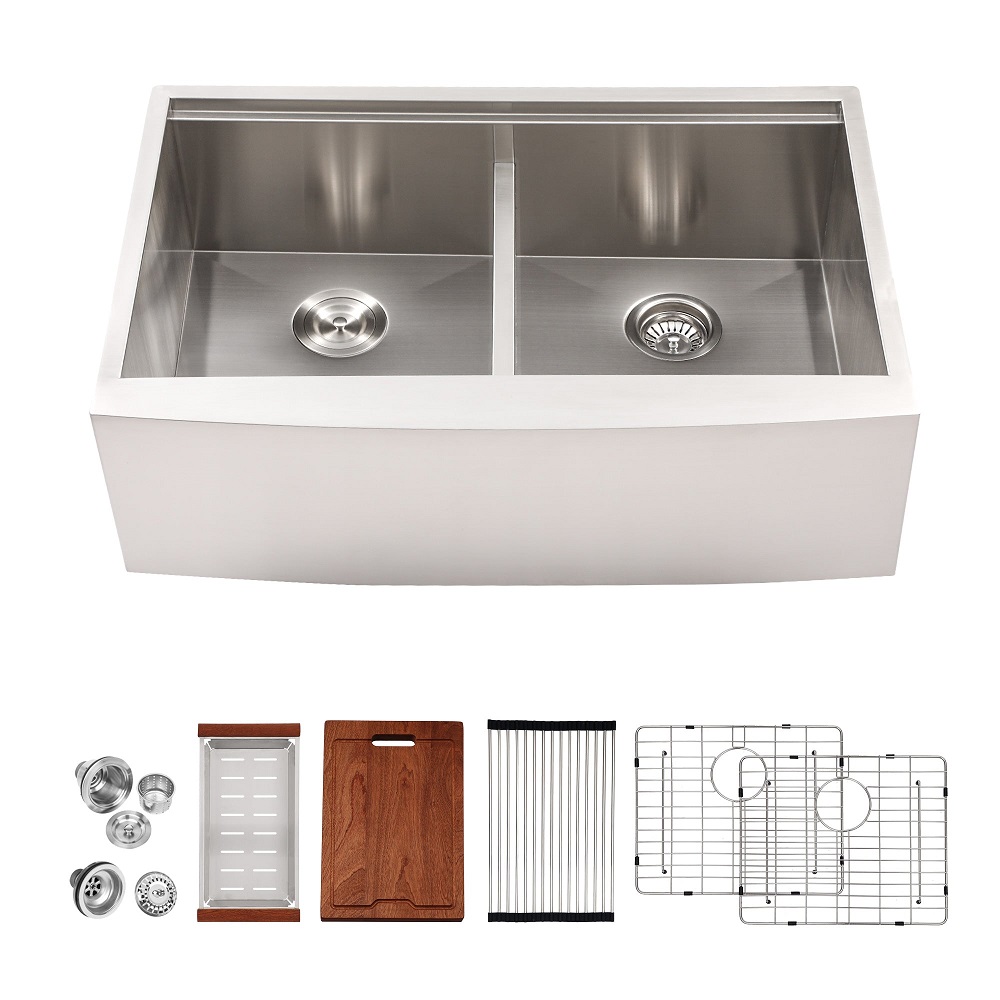
Aesthetic Appeal
Apron sinks are often praised for their aesthetic appeal. The exposed front panel adds an element of rustic charm and a sense of craftsmanship to the kitchen. For many homeowners, the apron sink becomes the focal point of the kitchen, helping to tie the room’s design elements together. Whether you’re remodeling a country-style kitchen or adding a bold design feature to a contemporary space, an apron sink can elevate the overall look of the room.
Pros of Apron Kitchen Sinks
1. Large Basin for Increased Functionality
One of the most significant benefits of an apron kitchen sink is its large, deep basin. These sinks provide ample space for washing dishes, preparing food, and even soaking larger items like pots and pans. The deep basin design allows you to handle more dishes at once, which is especially useful for large families or individuals who entertain guests frequently. The large size also makes the apron sink ideal for tasks like rinsing vegetables, cleaning large cooking utensils, and filling buckets.
2. Aesthetic Value and Timeless Charm
The exposed front panel of an apron sink gives it a timeless, classic look that can fit well in both traditional and modern kitchen designs. Whether you choose a sleek stainless steel model or a more rustic fireclay option, apron sinks have the ability to elevate the visual appeal of your kitchen. They often evoke the charm of farmhouse living, which many homeowners find appealing. This type of sink can help create a warm, inviting kitchen environment, which is especially important for those who enjoy spending time cooking or entertaining guests.
3. Ergonomically Designed for Comfort
The depth of an apron sink is not only practical but also ergonomic. Because the front of the sink expose, it eliminates the need to lean over the edge of a traditional sink, which can be uncomfortable for extended periods. The deeper basin allows you to stand upright while washing dishes, making it easier on your back and wrists. This is a key consideration for homeowners who spend a lot of time at the sink and want to avoid physical strain.
4. Durable and Long-Lasting Materials
Apron sinks are typically made from durable materials such as fireclay, stainless steel, or cast iron, which are known for their long-lasting properties. Fireclay, for instance, is a non-porous material that resists staining and is easy to clean. Cast iron sinks, when coated with enamel, are equally durable and resistant to damage. Stainless steel is another popular choice due to its resistance to corrosion and its ability to maintain its shine over time. These materials make apron sinks a great investment, as they can withstand daily wear and tear without showing significant signs of aging.
Cons of Apron Kitchen Sinks
1. Cost and Installation Challenges
While apron kitchen sinks offer numerous benefits, they can be more expensive than traditional sinks. The cost of purchasing and installing an apron sink can be a significant investment, particularly when opting for high-quality materials like fireclay or cast iron. Additionally, installation can be more complex, as the sink requires specific cabinetry adjustments to accommodate its size and weight. In some cases, a custom-built cabinet may be necessary to support the sink properly, which can further increase costs. Homeowners may also need to hire professional installers to ensure the sink is properly mounted.
2. Space Considerations in Smaller Kitchens
Apron sinks are larger and bulkier than standard sinks, which can pose a challenge in smaller kitchens. The size of the sink can reduce counter space, especially if your kitchen already limit in terms of available room. Additionally, the exposed front panel may make the sink feel even more prominent in a compact kitchen, creating a sense of crowdedness. For homeowners with smaller kitchen layouts, an apron sink might not be the best choice, as it could overpower the space and make the kitchen feel less open.
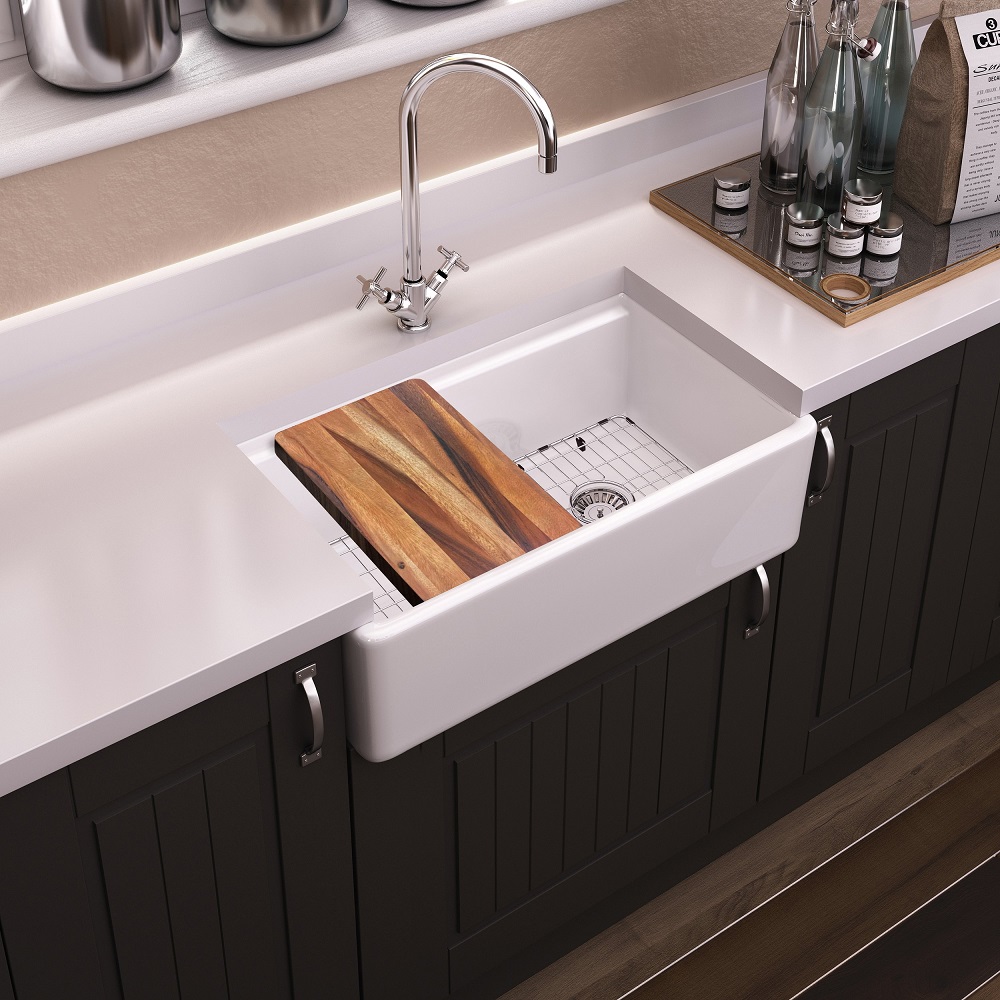
3. Maintenance and Cleaning Concerns
While apron sinks are durable, they may require more maintenance and cleaning compared to traditional sinks. Fireclay and cast iron sinks are particularly prone to chipping or scratching if not properly cared for, while stainless steel sinks can show water spots or scratches over time. The exposed front panel, while aesthetically pleasing, may also accumulate dirt or grime from regular use. Regular cleaning and occasional touch-ups are necessary to keep the sink looking its best. Homeowners should prepare to invest time and effort into maintaining the sink’s appearance.
4. Limited Under-Sink Storage
Another downside of apron sinks is that they often reduce the amount of under-sink storage space in the kitchen. The exposed front panel of the sink requires specific cabinetry that may not offer the same level of storage options as traditional under-counter sinks. In many cases, homeowners may have to adjust or redesign their kitchen cabinets to accommodate the sink, which could result in a loss of valuable storage space. This may be a concern for people who rely heavily on under-sink storage for cleaning supplies, trash bins, or other kitchen necessities.
Choosing the Right Apron Sink for Your Kitchen
1. Material Options for Apron Sinks
When selecting an apron sink, one of the most important considerations is the material. Common options include stainless steel, fireclay, cast iron, and composite materials. Each material has its own set of advantages and aesthetic appeal, so it’s essential to choose one that fits both your functional needs and design preferences. Stainless steel is sleek, modern, and easy to maintain, while fireclay offers a classic, farmhouse look. Cast iron, with its durability and enamel coating, provides both longevity and visual appeal. Composite sinks, often made from granite or quartz, are durable and resistant to scratching.
2. Sink Size and Configuration
Another factor to consider is the size and configuration of the apron sink. Apron sinks are available in various sizes, from single-basin to double-basin options, and you should choose one that fits your kitchen layout and usage requirements. A larger, single-basin sink might be perfect for large families or avid home cooks, while a double-basin sink could be more suitable for those who prefer to keep washing and rinsing tasks separate. Make sure the sink’s dimensions match the space available in your kitchen, as this will ensure both functionality and style.
3. Professional Installation
Given the complexity of installing an apron sink, professional installation often recommend. Many homeowners choose to hire experienced plumbers or kitchen remodelers to ensure the sink is installed correctly, particularly if it requires custom cabinetry. Professional installation ensures that the sink is securely mounted and leveled, preventing future issues such as leaks or improper drainage. A qualified installer can also offer advice on how to maintain the sink and preserve its beauty over time.
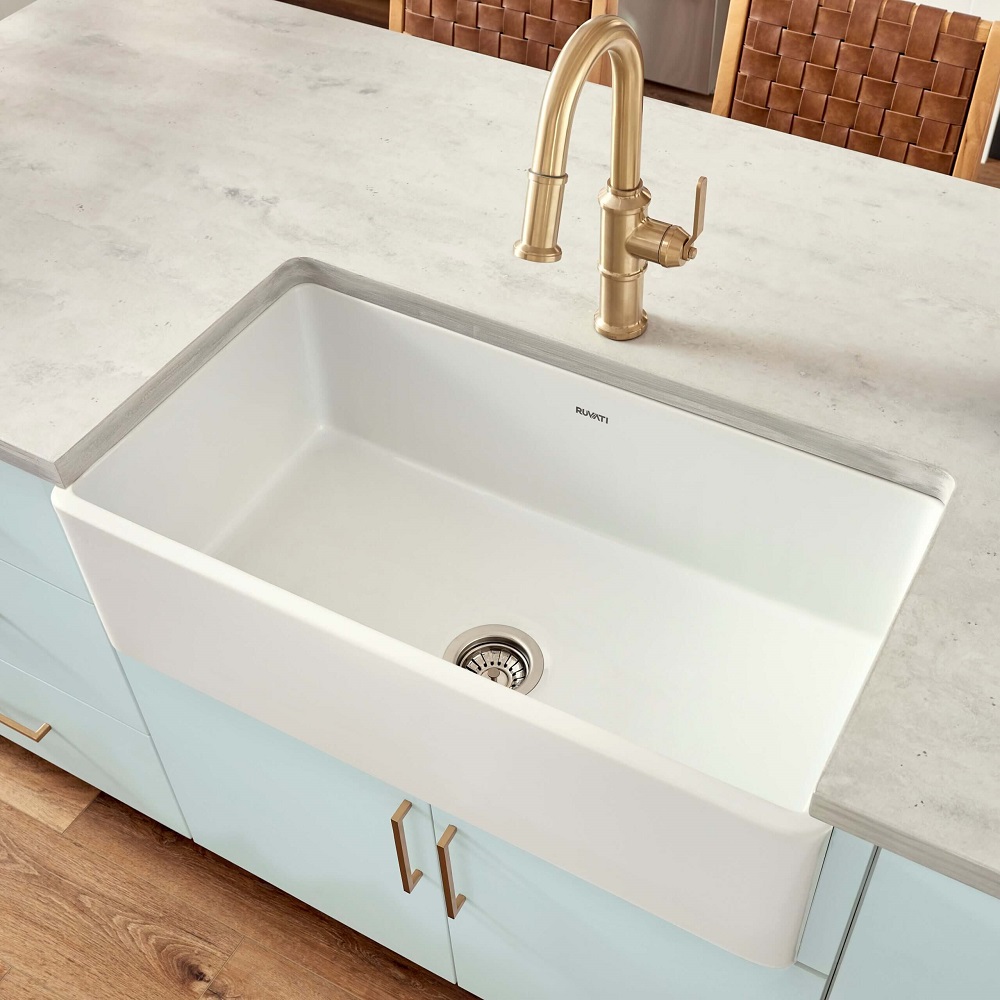
Conclusion: Is an Apron Sink Right for You?
Apron kitchen sinks offer a combination of style, functionality, and durability, making them a great option for many homeowners. However, they are not without their challenges, including higher costs, installation difficulties, and the potential loss of under-sink storage. If you have the space, budget, and desire for a timeless, rustic charm in your kitchen, an apron sink could be the perfect addition. On the other hand, if you’re working with a smaller kitchen or need more under-sink storage, you might want to consider other sink styles that better suit your needs. By carefully weighing the pros and cons, you can determine whether an apron kitchen sink is the right choice for your home.
